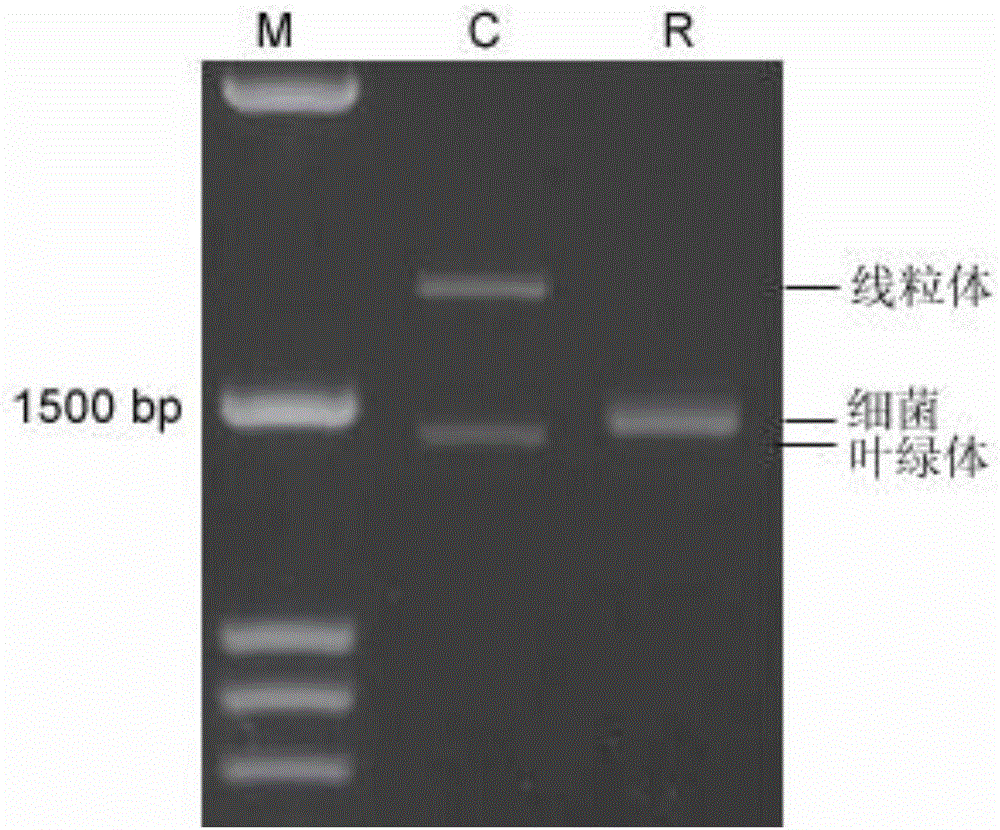Plant endophyte 16S rRNA gene amplification method and application
A technology of plant endophytes and plant endophytes, which is applied in the field of gene amplification to achieve the effects of reducing pollution, large amount of data and high diversity of results
- Summary
- Abstract
- Description
- Claims
- Application Information
AI Technical Summary
Problems solved by technology
Method used
Image
Examples
Embodiment
[0070] The total DNA of linden leaves was purified by the CTAB method, the material was pretreated according to the aforementioned method, and then the endophyte fragments of the plant were amplified according to the method of the present invention, and at the same time, without MTR (F / R) and CHP (F / R) ) The primer sample is used as a control. After the amplification is completed, the results are separated by 1% agarose gel electrophoresis. The results are as follows figure 1 Shown. The amplified bands in the control sample are mitochondrial and chloroplast bands. After using the present invention, the mitochondrial and chloroplast bands are almost invisible, and only endophytic bacterial bands are clearly visible.
[0071] After purification and recovery of the endophytic bacterial bands in plants, the aforementioned method was used to carry out secondary amplification of the 16S hypervariable region, followed by library construction and sequencing. The sequencing results are as...
PUM
 Login to View More
Login to View More Abstract
Description
Claims
Application Information
 Login to View More
Login to View More - Generate Ideas
- Intellectual Property
- Life Sciences
- Materials
- Tech Scout
- Unparalleled Data Quality
- Higher Quality Content
- 60% Fewer Hallucinations
Browse by: Latest US Patents, China's latest patents, Technical Efficacy Thesaurus, Application Domain, Technology Topic, Popular Technical Reports.
© 2025 PatSnap. All rights reserved.Legal|Privacy policy|Modern Slavery Act Transparency Statement|Sitemap|About US| Contact US: help@patsnap.com



